The Kingdom of Warfare-Tadoba Tigers
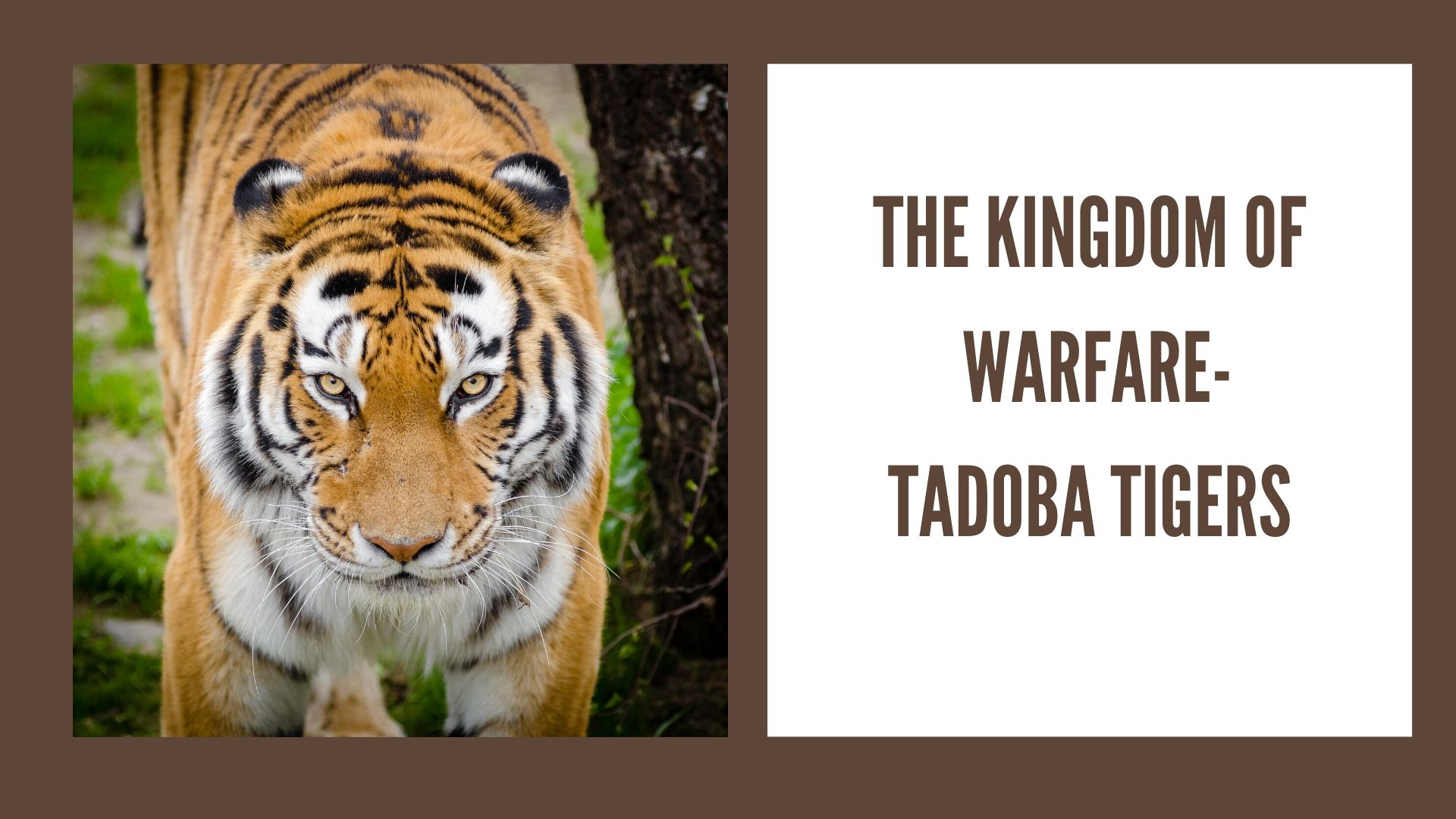
The warfare is based on deception ~ Sun Tzu, Art of War.
The bloodiest battles are always fought for dominance and control of land and ladies. The fiercest clashes in nature are never fought with weapons but with fists and claws. And two closely related species bring the fight to their backyard unlike any other, albeit invoking very different techniques.
Lions engage in vicious battles, fighting fiercely for a win even unto death, vanquishing the opponent. Since lions live and hunt in groups or clans, they need not worry about subsistence because of any injuries sustained. Tigers, on the other hand, are solitary hunters and don’t physically fight; Any debilitating injury can eventually lead to untimely and uncalled death.
Tigers engage their opponents through acts of deception–advanced warfare techniques. First, tigers mark territories (through various ways such as urine spraying, scraping etc) to keep wandering or intruding one’s away. Secondly, when their territories overlap with those of others, Tigers claw the trunks of the trees, sometimes by even climbing, to prove how menacingly tall they are, to the other wandering tiger. Besides the visual message, chemicals such as pheromones are also deposited on the barks.
Thirdly, in case of an engagement, a tiger will try to intimidate the opponent by flexing the muscles of the neck and shoulder, snarling and growling, standing on its hind legs, launching a volley of punches and swipes at its opponent. Most fights end at that point, but a few dominants take the warfare a little further. Life doesn’t matter to them as much as their supremacy.

The Tadoba range with its rich prey density and perennial and abundant water supply in certain pockets is a war-torn landscape. While elsewhere, a dominant tiger could rule for multiple years, say up to even a decade, the reign of a tiger in Tadoba is relatively short; thanks to the dominant males, each in a league of its own, ruling the coveted throne of thorns.
The throne was ascended by males from different clans and families, but the queens always were of the same matriarchal line spawned by a tigress known as Jhari female. Nothing much is known about Jhari as this was early 2000s and not many enthusiasts visited the park then.
Age of Empire
It is known that her daughter Vasanti (or the Vasant Bhandara female) reigned over a vast territory from Vasant Bhandara in the South to Katezhari in West and as deep as Panderpauni lake area in the North. She was also known as the lady of lakes (a moniker borrowed from a famous tigress, Machli from Ranthambore) and even goes by the name Katrina.
I believe that Tadoba was ruled by four kings then. Yeda Anna ruling southern area of the park from Khatoda and Cheechghat to Moharli, Old Katezhari aka Boom male ruling the Western part, Hilltop male and W-male (aka Vasant Bhandara male) ruling central Tadoba and Northern areas with a substantial overlap.
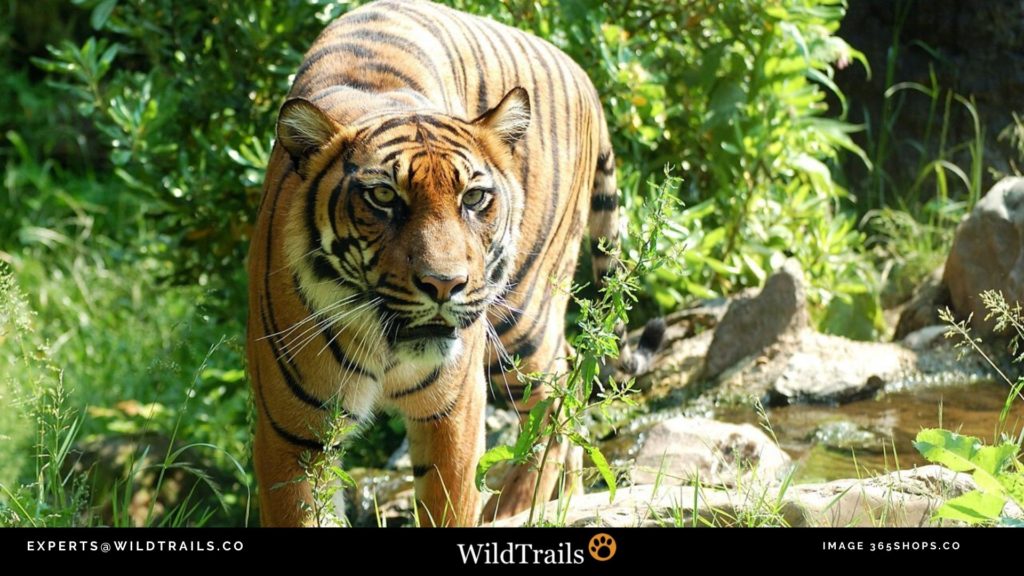
In late 2004, Vasanti gave birth to two cubs, known as Sin and Nira (or Bala) fathered by either old Katezhari male or the W-male. Nira became the Panderpauni tigress, staking out the best portion of her mother’s territory, while Sin went missing after infancy. Nira later occupied areas the prey rich areas of Tadoba including Panderpauni and Tadoba lake while pushing her mother Vasanti to western edges of the park.
Yeda Anna (T-34, named so after a Bollywood movie character for his temper and also known as Crooked Tail) arrived on the scene by 2005-06, way before Tadoba appeared on the tiger map. He was said to be the son of the legend of Moharli range, Sultan. Sultan was the nucleus for most of the tigers of this range; possibly the father of Waghdoh male or Scarface (T-38).

Seemed that tigers were growing in numbers with tigers at both Moharli and Tadoba ranges – Tara aka Lakshmi, Yeda Anna, Wagdoh, Madhuri, Vasanti etc., giving birth to cubs. Tigers are one of the most resilient species. A protected territory with sufficient prey and water will help them multiply in no time.
It wasn’t until the beginning of the current decade that the tiger warfare reached its peak.
Vasanti subsequently littered four cubs with Yeda Anna between Katezhari and Vasant Bhandara areas – two males and two females; Males were known as V6 and V7, while the females were called Malika (new Katezhari female) and Sonia. V7 (also known as Veerappan aka T-47) has been ruling a large territory in the buffer area, to the North of the park, and is around 12-13 years old as on date; with an impressive build and rough like that of his father.
Nira, the new lady of lakes (and daughter of Vasanti), mated with Hilltop male or W-male to produce three sets of litters. Only the third litter born in 2010 is known – P1 (Lata), P2 (Maya), P3 (Chaya) and P4 (Pandu), and Maya goes onto become the undisputed Empress of Tadoba, the epicenter of the Tiger warfare. A pregnant Nira died to an alleged snake-bite in November 2012. Maya (T-12) who had reached her sub-adulthood stage drove out her other sisters, a post which their whereabouts weren’t known.
The Gods of Tadoba
The name Tadoba itself is derived from a chieftain Taru who is said to have fought and killed by a tiger, and is widely regarded as a god in this area.
The dynamics of the park changed with the advent of this decade. The male population was on the rise. In the early 2010s, most of the territories were ruled by very powerful tigers – the quintessence of dominance, the epitome of ascendancy and embodiment of nigritude. And each of these tigers was a God in its own self (like Taru) for each of them would rather vanquish or die than relinquish their territories.
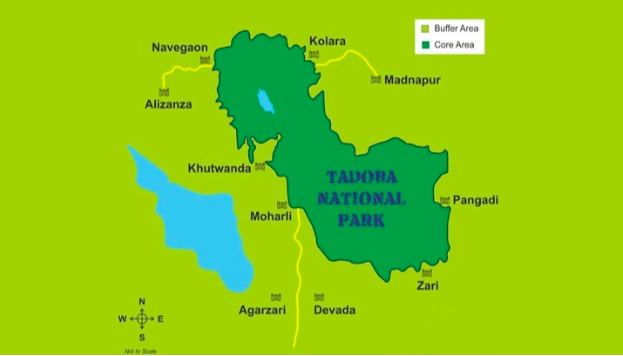
The North-Eastern parts of the park beyond Kolara and Sirkhada buffers were ruled by Veerappan aka V7 (T-47), son of Yeda Anna.
The Northern and North-Western parts of the park – Navegoan and Alijanja buffers were ruled by Narasimha (T-65).
The Kolara buffer to Central Tadoba range to as far as Eastern border beyond Kosekanal of Core were ruled by Saturn aka Namdeo aka old Matkasur male (T-42), a tiger who probably came from Kolsa or Brahmapuri.
The Western part of the park from Katezhari to Kala Amba in the North and central Tadoba was ruled by Tyson aka Amitabh aka Katezhari male (T-43), from the lineage of old Katezhari male aka Boom male aka Bhanushkindi male.
With a major overlap of territories with Saturn and Tyson, in the central Tadoba from Kala Amba in West to Kosekanal in East and Vasant Bhandara in the South to Panderpauni lake in the North, the most fertile area of the Tadoba range was ruled by Gabbar aka Leopard face (T-37), who is said to have come from Moharli range, probably from Sultan’s line.
The territory beyond Kosba line or the southernmost tip of the core area was controlled by Waghdoh who ousted Yeda Anna, the dominant male in 2011 after a fight at Kosba line. Even after a shrink in the size of his territory, Yeda Anna still controlled vast areas from Khutwanda and Khatoda till Katezhari areas.
W-male from the older generation too was living in the heart of Tadoba at the lake area and till Vasant Bhandara.
With six prime and dominant males in just about 100 sq. Km area, an area sufficiently enough for a single dominant tiger, the battle for supremacy began.
It was the birth of arch-nemesis Saturn, Tyson and Gabbar, and the beginning of spine-chilling tiger warfare–battered bodies, bruised faces, broken spirits which spilled over to tigers of this day.
Saturn, Tyson & Gabbar
By 2012-13 period, Saturn, Tyson, and Gabbar were having a substantial overlap of Panderpauni lake and surrounding areas. Tyson seemed to be the bulkiest of the lot. Saturn appeared bigger. And Gabbar was the smallest of the two as he was younger and the other two were already in their prime. But Gabbar had the biggest paws of the three. The advantage appeared to lean in favor of Gabbar, initially.
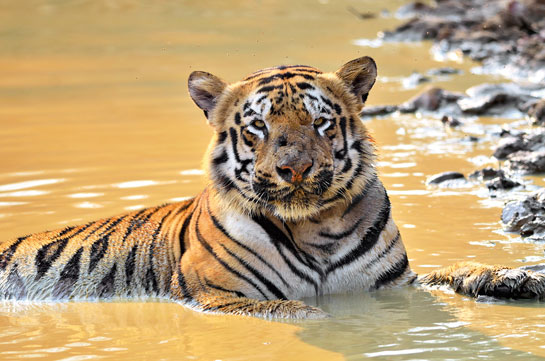
The first of the documented fights happened in November 2013 when a patrolling Gabbar came across a resting Saturn at the Kosekanal area. It was around the same time that Gabbar was accosting the Panderpauni female (P2), now commonly known as Maya, and hence, he might have confused with the resting tiger to Maya. A serious brawl ensued between the two with Gabbar showing an upper hand. Gabbar was spotted a few days later, and without any injuries.
Around the same time, Tyson too was engaging with Maya, seen together for the first time at Panchdhara (close to Tadoba lake). Saturn also was confronted by Tyson during the same time on the main road close to JamunBodi waterhole.
Gabbar was in his heydeys and he defied every danger that lay ahead of him. In August, 2014 a fight ensued between Gabbar and Tyson; yet again, Gabbar escaping with minor injuries but Tyson was injured badly on his face and nose. By end of 2014, one more confrontation happened between Tyson and Gabbar at the Panderpauni lake, when Tyson who was resting by the lake shore, fled the scene seeing Gabbar arrive; thus proving Gabbar’s supremacy; a thing that can also be understood by the fact that Maya only littered with the most dominant males.
The first litter was from Gabbar, born in the mid of 2014, but unfortunately, didn’t survive for long.
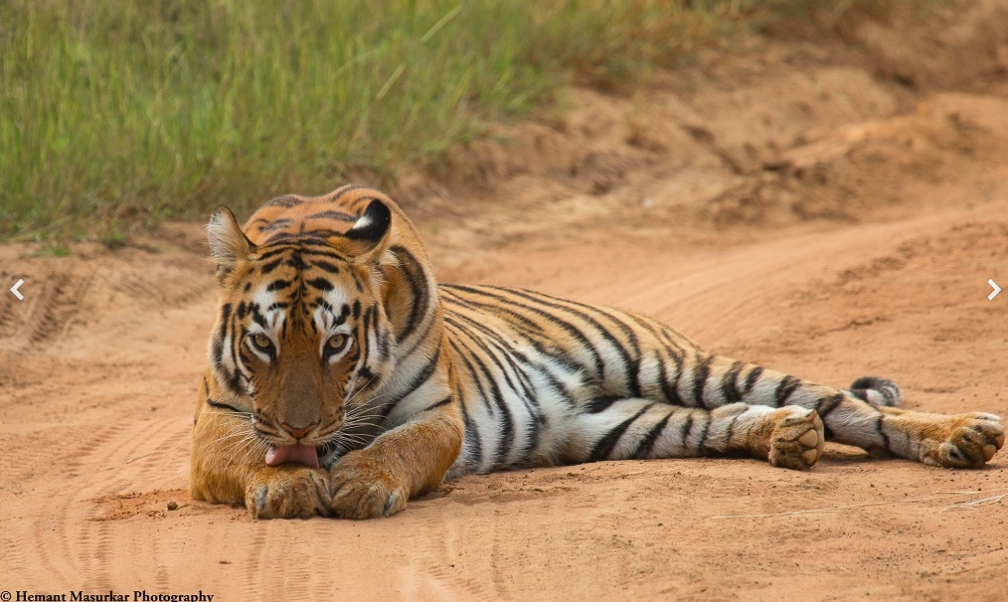
By 2014, Saturn’s mate Lakshmi aka Tara disappeared, probably died cos of old age, and Saturn frequented into deeper territories of Tyson and Gabbar, in search of a mate. Towards the end of 2014, Saturn was spotted again confronting Tyson at the Kala Amba area (close to Panderpauni lake).
A major twist to the tale unfolded in the form of WII (Wildlife Institute of India) radio-collaring Gabbar for long-term dispersal and telemetry studies, in December 2014. Gabbar, the supreme ruler of Tadoba suddenly was taking a beating. Gabbar seemingly lost to Tyson for the first time in February 2015. Within a few days, he was confronted by Saturn who hit the final nail in the coffin. In an almost one-sided battle, Gabbar was very badly clawed and mauled by Saturn. That was the end of Gabbar’s reign at Tadoba. He could never fully recover to what he was.
Saturn mated with Maya hence, and Maya delivered his cubs July 2015, her second litter. Unfortunately, Saturn vanished without a trace subsequently. Katezhari area was closed to tourism and Tyson was also never seen or heard of since.
It is imperative to note that a fully-grown male was found dead in Bhanushkindi area (deep in Tyson’s territory), in a decomposed state, on 4th October 2015.
Matkasur & other males
Matkasur (T-54) is a tiger shrouded in mystery. He was named so, because he was initially sighted in the Matkasur area, ruled by Saturn. He was also misidentified as Pandu (another name for P4), brother of Maya for a long time. He was also wrongly thought to be Saturn’s son (from Lakshmi aka Tara’s litter at Kolara side). Some accounts even say that he’s the son of Tyson.
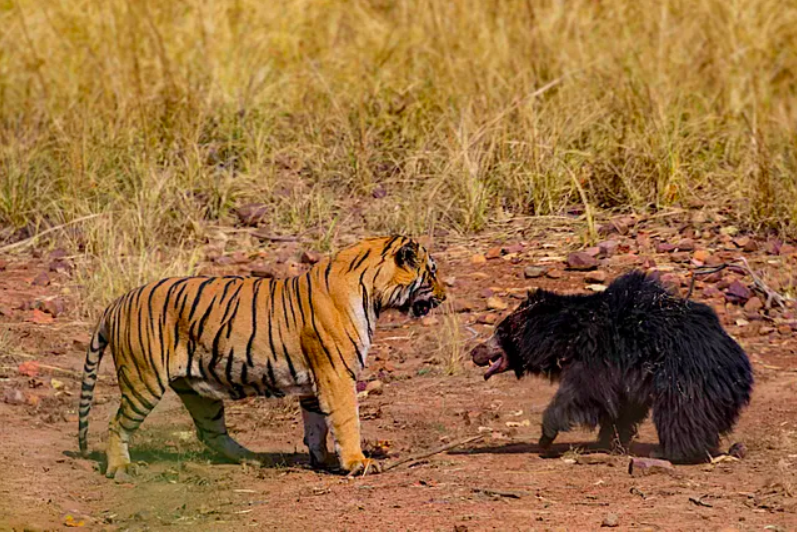
(Photo: Mritunjay Tiwary)
A few of us believe that Matkasur is not from the Tadoba region. A diamond stripe-pattern on the sides of the belly area, a commonality in all Tadoba males is totally absent in the case of Matkasur.
Matkasur was a bold but a young male by the time he reached Tadoba. He was regularly sighted in the territories of Gabbar, Saturn, and Tyson as early as 2014; which is when I believe he arrived in Tadoba. He followed the principles of ‘Art of War’ – warfare is deception. He avoided confrontations with all the males in the Tadoba range during their prime, despite sharing the same territories. There is a record that he was chased away by Gabbar during his initial days.
Another young tiger named Bajrang (T-49) was also trying to make territory, and he started visiting Panderpauni and surrounding areas. But this was during the active war period, that he was recluded into the southern side of the park–Moharli, where his ascent coincided with Waghdoh, the supreme ruler’s moving out. Bajrang goes onto carve one of the biggest territories spanning across Moharli range, Junona buffer (south-east) and even Kolara buffer (north-east) and courting more number of females (around 7-8) than any other tiger in these parts. This tells us how tigers have different psyches; two different individuals – Bajrang and Matkasur and their persistence–one came to conquer it, but noting the presence of bigger males leaves the territory, while others hid in plain sight, waiting for his time to ascend; both tiger-greats of the current generation.
Matkasur actively started marking and patrolling territories since mid-2015. I saw him for the first time in 2015. He seemed to be a very confident individual, aged around 4 years. He had a robust neck and shoulder line and a square head. He was then checking out for intruding males.
With Matkasur on a prowl, Saturn and Katezhari vanished without a trace. It is possible that Matkasur himself drove the males out, or that the older males avoided a confrontation with this very young tiger.
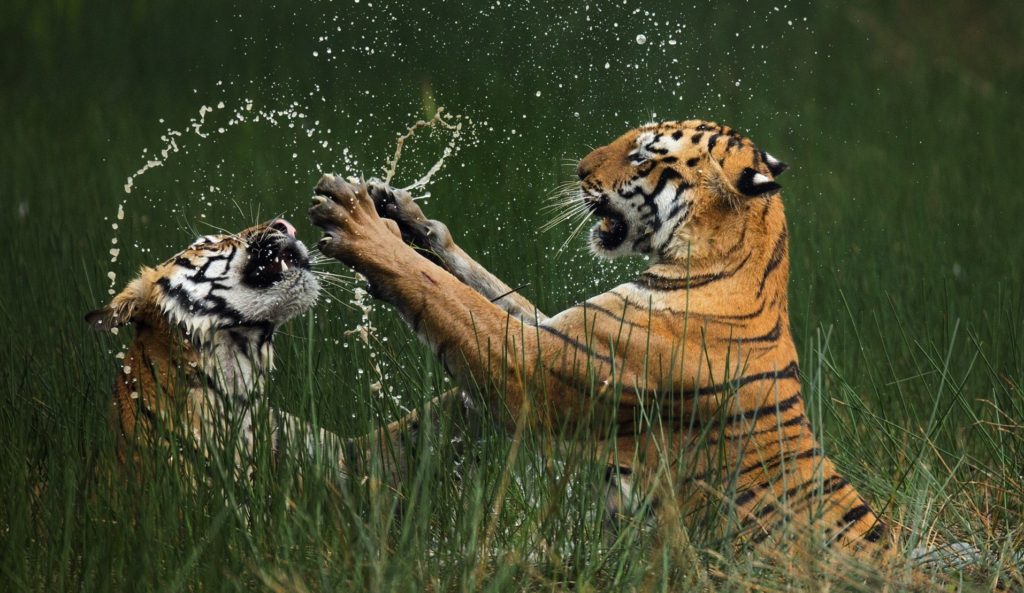
Maya (T-12) was raising her three cubs (sired by Saturn, and who vanished immediately post-birth) in the very territory, hiding them from Matkasur. Sightings of Matkasur increased which meant that he was patrolling his territories often. Sometime in early 2016, Matkasur confronted Maya and subsequently went on to kill two of her cubs.
Maya, one of the greatest tigers of her era, was unable to raise her cubs in this war-striken zone. An intelligent tigress, she mock-mated with the likes of the dominants Saturn, Gabbar and Tyson, and others Narasimha, Bobadiya (an old male who controlled parts of Navegaon, North of Maya’s territory), Kali (son of Saturn and Lakshmi aka Tara aka Naakati from her 2012 litter, who made his territory to west of Panderpauni lake/Maya’s territory) to save her cubs on many occasions.
Mock-mating is one of the techniques adapted by tigresses to divert the attention of intruding males, thus saving the existing litter. Rejecting the advances of the male can even prove fatal to the tigress. Though induced ovulators, if not in the heat period, tigresses cannot get pregnant.
The lone surviving cub of Maya was even cared for better. On multiple occasions, Maya would leave a distraught and heart-broken cub alone, preparing him for the worst. Matkasur couldn’t outdo Maya at her game, and it was only after the cub attained subadulthood did a tiff happen between the cub and Matkasur. In February 2017, the cub managed to injure Matkasur, but Matkasur made the message clear – that the cub cannot stay in the area. The subadult cub moved out of his mother’s territory the next day.
However, before the closing of the park for monsoons in 2016, Gabbar once again appeared in the scene. Gabbar mated with Maya, and Matkasur was nowhere to be seen. It seems that both had a fight, with Matkasur getting injured on his nose. Matkasur seemed to have been banished, but he nursed himself to health and in the following encounter, he pushed out Gabbar, reclaiming his territory.
In the monsoon of 2017, Matkasur mated with Maya and two cubs were born in November 2017. Matkasur also mated with Choti Tara in 2016 and subsequently in 2018 to produce two litters. TaraChand from the 2016 litter, the biggest of the two brothers died to electrocution, while Chota Matka is ruling the northern parts of the park.
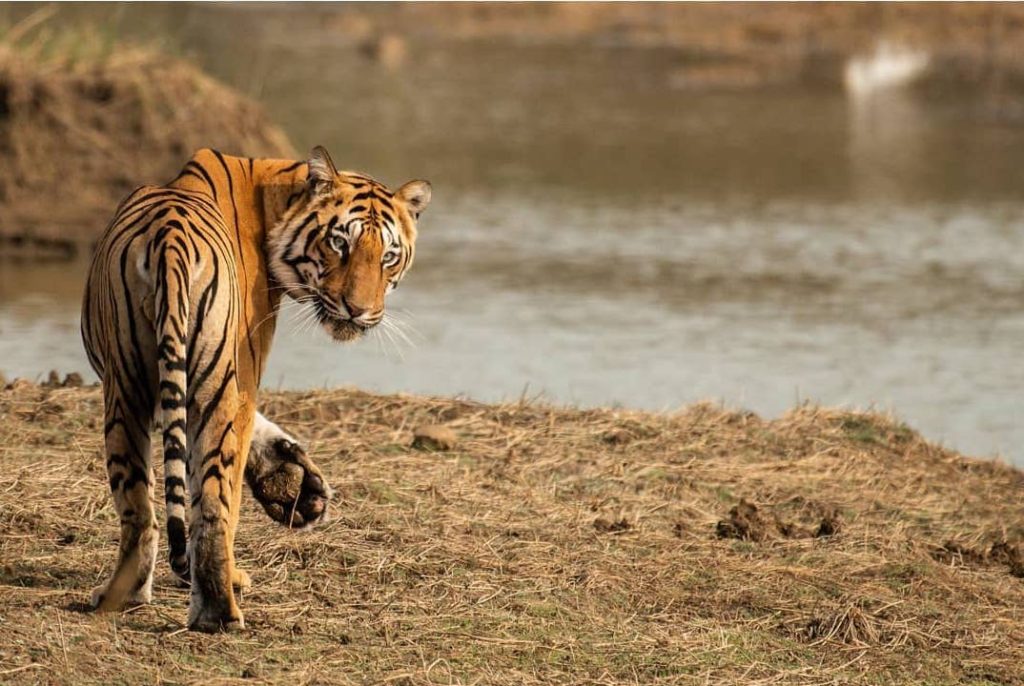
Image: Akshay Chandra
Matkasur was getting frequently injured and it was supposed that Chota Matka was trying to fight out with his father, for the territory. Males follow non-philopatry – they generally don’t stay in the area where they were born; probably, nature’s best way of avoiding inbreeding, with mothers. Further to this, a male that has just attained subadulthood is still dependant on mother (unlike females) and is still way too underweight and inexperienced to fight it out with a much bigger male, like the father.
Soon, it was learnt that an intruding male was in Matkasur’s territory. This one was known as Rudra or simply Shivanjari male, from the Shivanjari area in Kolsa range on the far south-eastern side of the park. He was the son of one of the dominant males of that area – Kakarghat (T-36) and Shivanjari (T-6) female. He along with his brother Tala migrated from Kolsa range to Tadoba.
Tala fought with Bajrang in Bajrang’s territory in Moharli, but he was no match to Bajrang’s might. He later advanced to Tadoba range where he was seen mating with Maya, towards the end of this year.
Rudra, on the other hand, was constantly fighting it out with Matkasur. It seemed as if Matkasur’s dominion is on the thin line. He was getting injured more often than not. But every time, he would recuperate and get back to his territory, never abandoning it.
In December 2019, Matkasur was seen in a totally impaired condition. He had a bad limp and was reduced to bones. We hypothesized that this is the end of him. But, a few days earlier (to post this story), Matkasur took refuge in the core fringes and made a cattle-kill. He’s clearly looking at redemption. Still in his prime, I believe that there is a lot of fight left in him, and he would pounce back.
Meanwhile, Maya was stolen from Tala, by his own brother, Rudra, after a skirmish. Like time, Maya had remained still and constant, while the sovereignty of Tadoba shifted between three generations. Probably, Maya, like time, will have the answer to who becomes the king.
Courtesy: Sanjeev Siva
Disclaimer–A lot of information has been collected from various sources, accounts and personal stories. There is always a room for the discrepancy;Please help me correct, if any.
With 4 years of Sightings data + Extensive expert tracker network in jungles, our customers had the best wildlife experiences.
Buy Wildlife Fashion Accessories
Exclusive Online Store for wildlife products
Packages
Packages Loading...
Recent Posts








